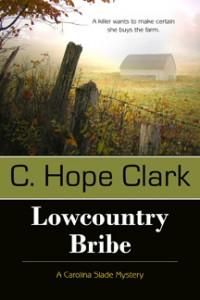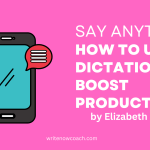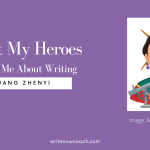Write Now! Weekly Writing Tip: The List Book
Hello writers! Before I get to the tip, I have a few announcements for you.
 Write Now! Mastermind class. Our brand new series of Fall Write Now! Mastermind classes begins tomorrow, September 26, 2012 at 12:00 PM CDT! This month’s guest is C. Hope Clark, author and founder of Funds for Writers, who will be talking about how we can make money from various funding sources including writing contests! Sign up at the Write Now! Mastermind class page for information on how to call in.
Write Now! Mastermind class. Our brand new series of Fall Write Now! Mastermind classes begins tomorrow, September 26, 2012 at 12:00 PM CDT! This month’s guest is C. Hope Clark, author and founder of Funds for Writers, who will be talking about how we can make money from various funding sources including writing contests! Sign up at the Write Now! Mastermind class page for information on how to call in.
Contests. Speaking of contests, visit the Write Now! Coach blog to read Hope Clark’s post on Contests and enter to win a copy of her new book, Lowcountry Bribe. Last week, I guest blogged at Quirky Books. Visit the blog by September 28 and enter to win a copy of Write-A-Thon. And stop by the blog this coming Friday for fantastic Writers Read post by Jocelyn Koehler on Fall Books and enter to win a copy of her ebook, The Way Through the Woods.
 National Novel Writing Month. Finally, if you’re a Milwaukee-area writer, you have until tomorrow (September 26) to drop off your entry for the fabulous NaNoWriMo contest at Boswell Book Company. Our big National Novel Writing Month kick-off and celebration will be held Tuesday, October 9 at 7:00 PM—so even if you don’t have anything to enter, stop by to get some great tips for completing NaNo, a free bookmark and, of course, some chocolate!
National Novel Writing Month. Finally, if you’re a Milwaukee-area writer, you have until tomorrow (September 26) to drop off your entry for the fabulous NaNoWriMo contest at Boswell Book Company. Our big National Novel Writing Month kick-off and celebration will be held Tuesday, October 9 at 7:00 PM—so even if you don’t have anything to enter, stop by to get some great tips for completing NaNo, a free bookmark and, of course, some chocolate!
 The List Book by Rochelle Melander
The List Book by Rochelle Melander
When she was in sixth grade, Barbara Ann Kipfer began keeping a list of things that made her happy. Eventually, that list became the bestselling book, 14,000 Things to Be Happy About. No doubt Kipfer’s book inspired Lia Romeo and Nick Romeo’s book 11,002 Things to be Miserable About: The Satirical Not-So-Happy Book. Kipfer, the master of list books, has also penned 8789 Words of Wisdom, 1,001 Ways to Live in the Moment, and 4000 Questions for Getting to Know Anyone and Everyone.
What is The List Book?
The list book can take two forms. The first form, as in the books mentioned above, is a simple list of items that go together: books to read, places to travel to, or paintings to see. Some of these books are straight lists (like Kipfer’s 14,000 Things to be Happy About) while others include short descriptions or add photographs.
The second type of a list book features a list of ten, twelve, or 99 items and includes a short essay on each. When Kent M. Keith was a sophomore at Harvard in the 1960s, he developed a list of ideas for doing good in a difficult world. Over the years, this list showed up in graduation speeches, classroom handouts, and was even spotted at Mother Teresa’s children’s home in Calcutta. This list became the book, Anyway: The Paradoxical Commandments: Finding Personal Meaning in a Crazy World. In the book, Keith shares his list of commandment along with a short essay explaining each commandment. Other examples of this type of list book include Stuart R. Levine’s Cut to the Chase and 99 Other Rules to Liberate Yourself and Gain Back the Gift of Time and Cherie Carter-Scott’s If Life is a Game, These are the Rules: Ten Rules for Being Human.
Should You Write a List Book? Most of us write the book we need to read. Many list book authors created their lists to help them or others understand and cope with life. Because of the popularity of list books, the market has generated a whole slew of copycat list books. Before you sink all of your time and resources into creating your own list book, think about:
1. Your topic’s suitability. Does your topic readily fit into the format of a list book?
*Does your topic or idea for a list book contain enough material for a whole book? Some lists are better off as an article, blog post, or chapter in a bigger book.
*Does the list format give you enough space to cover your topic adequately? Some topics require more space and depth than the typical list book, which tends to be just at or under 30,000 words. Is there information you will have to leave out because of this format?
*Does the list format allow you to communicate the information in a way that is helpful and accessible to your readers? Is there another format that does this better?
*What kind of list book works for me—a straight list or a list with essays?
2. Your ideal reader. I never look at a format without also considering my ideal reader. Imagine the person who you think will LOVE your idea and buy your book. Ask:
*How will this format appeal to my ideal reader?
*How will this format annoy or frustrate my ideal reader?
3. Your competition. Take a look at the other books in your topic area. Have others already done list books? What kind? Is there a need for a list book or a different kind of list book? How could you write one that is both different and better?
4. Your preparation and readiness. Finally, consider the work you have already put into researching your topic and your level of interest.
*Do you already have all you need to create a list book?
*Is there a topic that you’d enjoy exploring as a list book?
If you’re still not sure about the whole list book idea, have some fun with it. Create a list of ten or fifty things to do, see, be, believe, or buy specifically geared toward your ideal reader. Now what do you think?
The list book can be a great format for writing a book fast. It provides a unique and tangible structure that can be fun to work with. In addition, the product can engage, inform, and inspire readers.
Your turn: What’s your favorite list book? Have you considered writing a list book? What kind and why?















14,000 Things To Be Happy About is one of my all time favorite books. I have had my dog-eared copy for more than 20 years. At different times in my life, I have paged through this little gem of a book and added my own thoughts and comments. Thanks for the reminder of how much I love it.
What a great story, Sharon! I love it that you have added your own thoughts and comments…making the book interactive. Thank you!
The Book of Lists is one of my favorite reference books. Lots of mini-lists, in hierarchical order. So fun and so useful! Myself, I love annotated lists, like in Geek Wisdom or the super awesome Book of Imaginary Beings (yeah, I roll Borges).